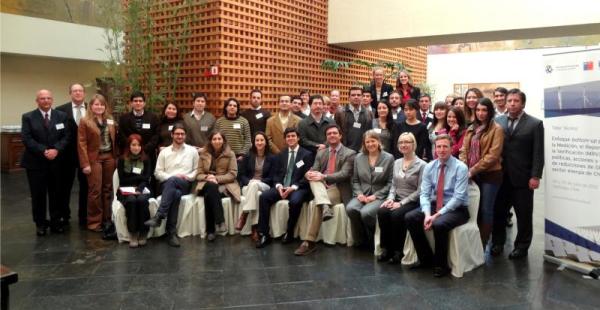
Technical workshop “Bottom-up approach to the MRV of policies, measures and actions in the Chilean energy sector”
In Copenhagen in 2010, Chile pledged that it will take nationally appropriate mitigation actions (NAMA) to achieve a 20% deviation below the “business-as-usual” emissions growth trajectory by 2020, as projected from the year 2007. To achieve this target, numerous mitigation actions are already under implementation at the national level, most of them being carried out in cooperation with the private sector. Currently, Chile is developing a national registry of mitigation actions.
The Chilean government aims to develop a solid system of monitoring, reporting and verification (MRV) of emission reduction in the energy sector, applying international guidelines to meet similar high standards for supported such as for unilaterally financed NAMAs.
To support the Chilean ambition, the second technical workshop in the framework of the International Partnership on Mitigation and MRV has taken place in Santiago de Chile from 24 to 26 July 2012, hosted by Chile’s environment ministry (Ministerio del Medio Ambiente - MMA). The workshop aimed to contribute to the elaboration of feasible methods for standardising and upscaling information for the MRV of policies and actions in the Chilean energy sector. About 40 representatives from a range of public and private institutions in Chile - including the environment and energy ministries, consultancy firms, NGOs and universities - participated in this event, joined by international experts.
The first day was dedicated to an introduction into the concept of MRV at national and international level, with a special regard to the energy sector. Representatives from the Chilean Energy Efficiency Agency (Agencia Chilena de Eficiencia Energética – AchEE) and from the Centre for Renewable Energy (Centro de Energías Renovables – CER) presented each two NAMAs of their particular sub-sector. In four working groups, participants identified potential indicators for the projected NAMAs.
Activities on the second day aimed at contributing to an understanding of how to access, validate and aggregate the data needed to calculate the identified MRV indicators. Experts from i.a. Great Britain, Germany and Mexico presented different methods of data collection, aggregation and validation. Discussions in the working groups concentrated especially on the development of a national MRV platform. Finally, next steps for the application of MRV in the four mitigation actions were identified.

